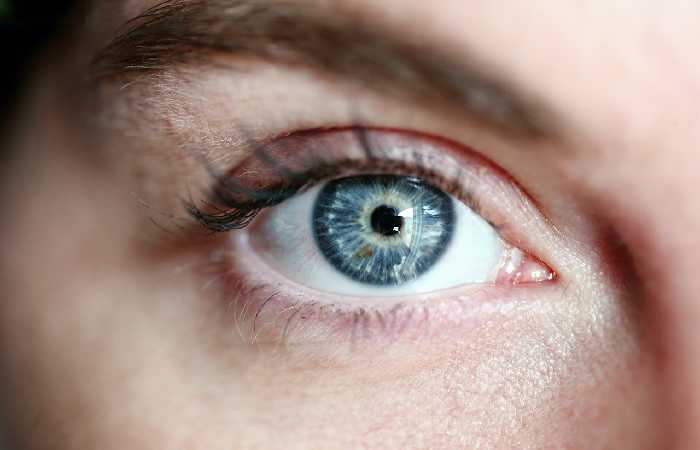Table of Contents
Unreal Skin
Unreal Skin – Mix the flour and water, resulting in a dough-like mixture. Do not add makeup to the cross. Use this mixture, and it can affix to the face or body with a bit of regular Elmer’s school glue. Mold the dough or fake skin to the desired effect, then let dry. Ventilation time is at least 10-15 minutes; however, after adding makeup, fake blood, or other gruesome products, the simple skin recipe comes to life.
How to Make Fake Human Skin
Create fake skin as a prop for theatrical production, film or other video projects, as part of a Halloween costume, or as a Halloween adornment. Make skin featuring stitch, blood or other gruesome effects or leave it as it is. Affected skin is pretty easy to create; however, the lifespan of affected skin depends on the materials used, as fake skin made with food ingredients will likely not last as long as affected skin made with latex.
Flour
Step 1
Mix 5 tbsp. Warm water with 8 tbsp. Flour in a basin. Stir the mixture until you contain a dough-like consistency.
Step 2
Apply the mixture to the skin as desired using a few dabs of makeup adhesive to get the affected skin to stick to your natural skin. I attach the affected skin to a prop and add white glue to the mixture to make it stick. Allow drying for about 15 minutes.
Step 3
Paint the affected skin with the foundation in the colour of your choice.
How to create Fake Skin for Tattooing Practice
said that practice makes perfect. Therefore, practising skins for tattooing can be helpful. However, buying practice skins can be expensive if you are learning. Luckily, there is a way to make them at home. While family skins might not be as durable as those bought at the store, they provide a great way to practice your craft without spending a fortune.
Step 1
Mixing cornstarch and water in the bowl Combine 1/3 cup of hot water and 1/4 cup of cornstarch or flour into a clean bowl. Whisk or mix the ingredients until the mixture is hard to stir and thick. You can include more cornstarch or flour to get the right constancy. The tissue should exist consistent in texture and easily moulded with your fingers.
Step 2
Using the undulating pin, you’ll want to roll out your dough blend until you have a nice flat sheet.
Step 3
If you want flesh-coloured practice skin, you must mix a few drops of flesh-coloured makeup or paint in a plastic bag with Elmer’s glue, creating a nice flesh colour. Once the mix is the desired colour, you can snip one of the corners off the bag to quickly pour it onto the sheet. If you are not concerned with colour, skip stepping 4.
Step 4
Cover the sheet with a nice glue coating, then roll and knead the mixture to combine the dough-like substance and cement. You want to do this several times, ensuring the two mix well. Add more glue as needed; create sure to mix well each time you add.
Step 5
Using the undulating pin or your hands, crush the skin into a sheet again. (The width of the sheet is up to you, though keep in brain that thinner sheets are easier to manipulate). Now, let it dry totally. As the combination dries, it should have a thick elastic feel, much like skin.
How to Using Your Fake Skin
You’ve done it! You mastered creating fake tattoo skin. It’s the perfect colour, the texture is lovely, and now you’re ready to use it. There are a few effects you need to remember before diving right in.
Creating your fake tattoo skin is an art form; it might take a few periods to get it right. Hence, don’t get dejected.
If created properly, your tattoo skin should react well to your inks. However, ensuring that the entire creation is completely dry is crucial. Otherwise, halfway through, you might have a bit of a mushy mess on your hands.
Whether by a gun to tattoo or the fix and poke method, you might notice that the affected skin will react slightly differently. Therefore, give together a try.
Depending on your homemade skin’s stability, its strength takes the inks a bit too well, and you’ll notice a bit of bleeding from the tattooed line. If you are starting, this isn’t something to worry, and You are simply working on your technique of creating lines and shading. However, the homemade skin might not achieve the desired results if you practise fine line work. In this instance, you may need to get little skins for this practice.
Natural skin stretches a lot. It would help to consider this when creating your work on your affected skin. While it will have some spring, it does not extend the same way that natural skin does.
Bodies are not flat. When creating a piece on your affected skin, wrap it on a water bottle or other curved service to get the feel of tattooing on real flesh.
Conclusion:
Fake Skin – Practice is pivotal in learning the art of tattooing. Most people aren’t open to being your first client; therefore, affected skin can come in handy to learn the trade. However, purchasing practice skins can get expensive if you go through dozens a week. Therefore, making your affected skin with glue, cornstarch, or flour can come in handy.
Related posts
Featured Posts
Friendship Gifts 2024 – Flower Balloon, Authentic, and More
Introduction Friendship Gifts 2023: Suppose you need the inspiration to give gifts to your best friend, regardless of age. You…
eBay Embraces NFTs
Introduction eBay Embraces NFTs – One of the American multinational e-commerce firms known as eBay has moved on embracing the…


